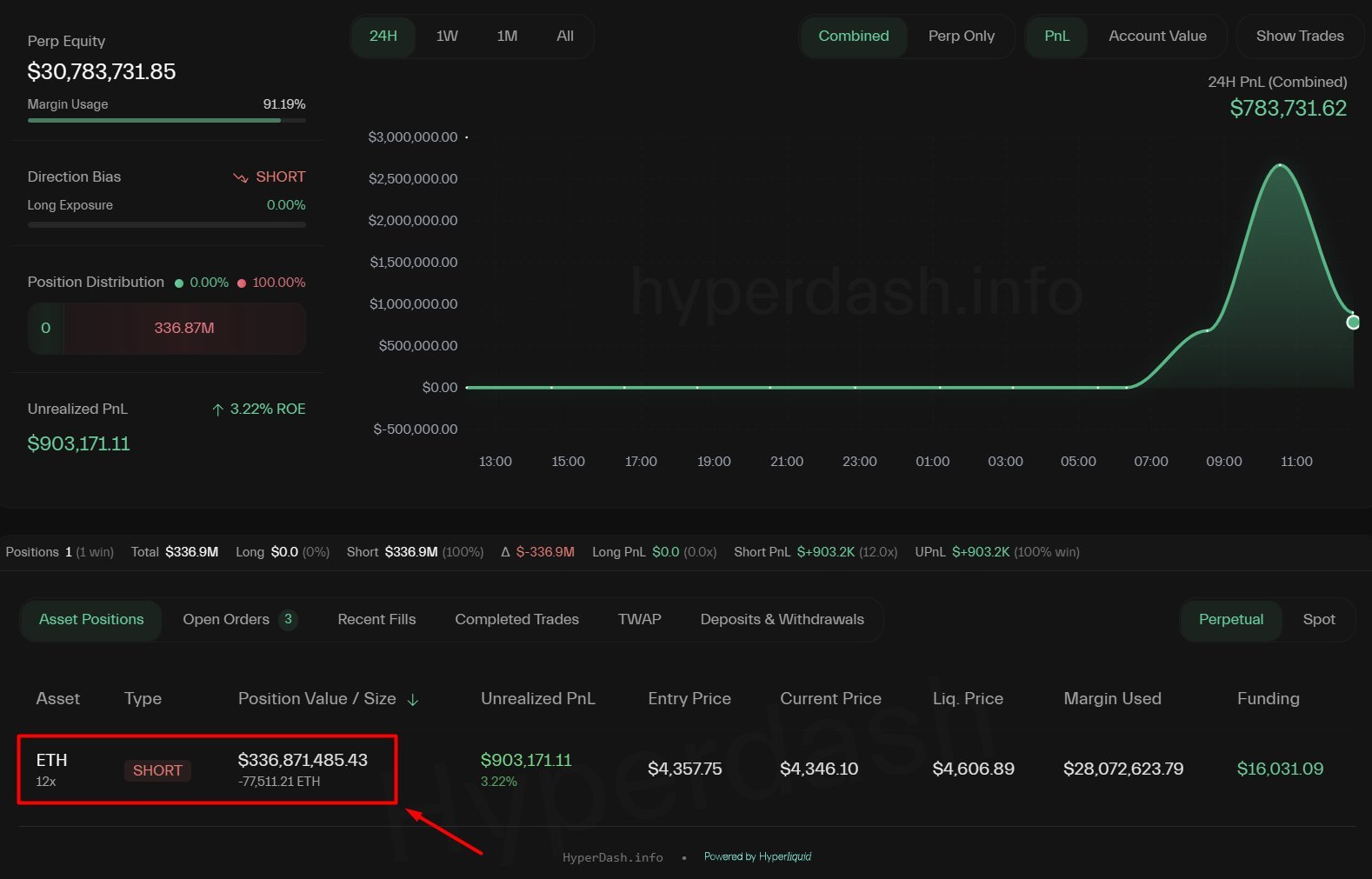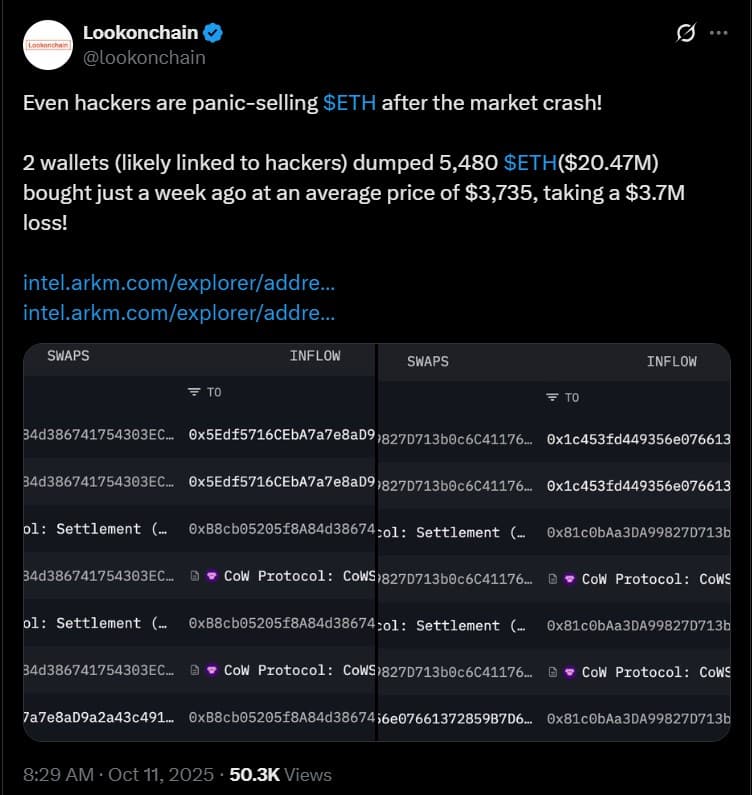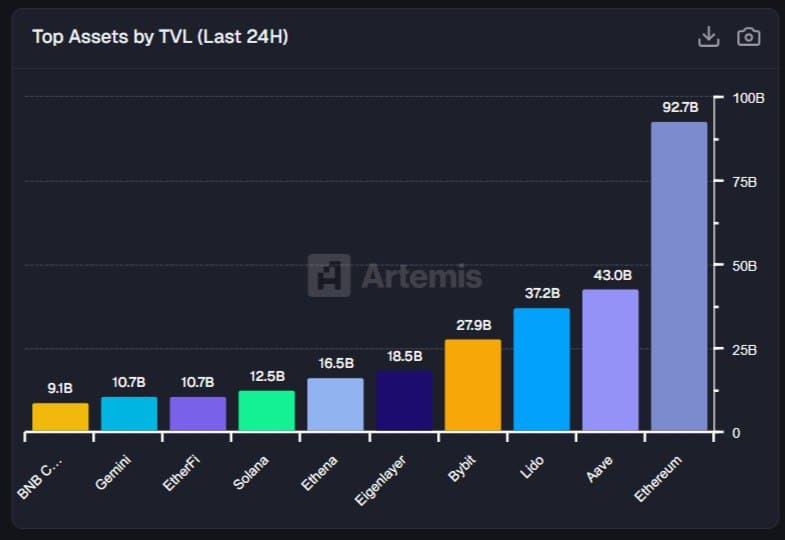The Ethereum crash was triggered by a sudden $330 million ETH short that hit minutes before a market-moving tariff announcement, sparking panic selling, gas fee spikes and flash liquidations across DeFi. This ETH short amplified market volatility and forced rapid exits by wallets and decentralized exchanges.
-
Massive $330M ETH short triggered a rapid market sell-off.
-
Panic spreads: gas fees surged, DEXs experienced freezes, major altcoins plunged 30%+.
-
Ethereum retains DeFi dominance with $92.7B TVL per Artemis data despite the crash.
Ethereum crash: $330M ETH short sparked panic selling and DeFi turmoil — read concise analysis and what traders should watch next. Learn more now.
What caused the sudden Ethereum crash?
The Ethereum crash was precipitated by a single, large $330 million short position on ETH opened minutes before major macro news, which amplified selling pressure and triggered automated liquidations across derivatives and DeFi. The move coincided with surging gas fees and coordinated exits by high-value wallets, worsening the decline.
How did whales and attackers influence the sell-off?
Whales and addresses linked to known attackers accelerated the decline by offloading large ETH positions. On-chain observers reported wallets dumping 5,480 ETH (~$20 million), realizing a $3.7 million loss, which deepened market illiquidity and triggered cascading liquidations on leveraged platforms.

Source: X
The crash came just after a mysterious $330 million ETH short hit, moments before a major tariff announcement. As panic spread, gas fees spiked above $500 on some networks, decentralized exchanges experienced order book and routing delays, and many major altcoins fell more than 30% in short order.
Market participants noted the timing of the short coincided with the macro news cycle, prompting questions about potential insider activity. While regulators and on-chain investigators evaluate transfers and timestamps, no definitive proof of illicit coordination has been publicly confirmed.

Source: X
Why did gas fees and DEX activity spike during the crash?
Front-loaded liquidity withdrawals and mass on-chain settlements drove demand for blockspace, pushing gas fees much higher. The sudden increase in transactions caused congestion, delay in trade routing, and in some cases temporary failures on decentralized exchanges, which amplified losses for users attempting to exit positions.
On-chain analytics providers and market desks reported surges in transaction volume and failed swaps during the peak of the event, a hallmark of stress-driven network demand.
How resilient is Ethereum’s DeFi position after the sell-off?
Despite the turmoil, Ethereum’s DeFi ecosystem remains dominant. Artemis data shows Ethereum with approximately $92.7 billion in total value locked (TVL), more than double the combined TVL of next-largest platforms such as Aave and Lido. This structural depth helped limit longer-term contagion even as short-term prices fell.

Source: Artemis
Frequently Asked Questions
How can traders spot suspiciously timed shorts?
Look for large, concentrated positions opened immediately before market-moving announcements, correlated fund transfers, and matching on-chain movement across exchanges. Cross-check timestamps and wallet histories for unusual patterns.
What should DeFi users do during network congestion and high gas fees?
Prioritize essential transactions, increase slippage tolerance only when necessary, and monitor mempool conditions. Consider waiting for congestion to ease to avoid failed swaps and excessive fees.
Key Takeaways
- Immediate cause: A $330M ETH short amplified liquidations and panic selling.
- Market impact: Gas fees spiked; DEX routing and liquidity suffered; several altcoins plunged over 30%.
- DeFi resilience: Ethereum maintained ~ $92.7B TVL (Artemis), underscoring structural depth despite price volatility.
Conclusion
Summary: The Ethereum crash was driven by a large, well-timed $330M short that triggered cascading liquidations and network stress. Ethereum crash dynamics show how leverage, whale behavior, and macro news can combine to amplify volatility. Traders and protocols should reinforce monitoring, manage leverage carefully, and prioritize liquidity planning in future events.
